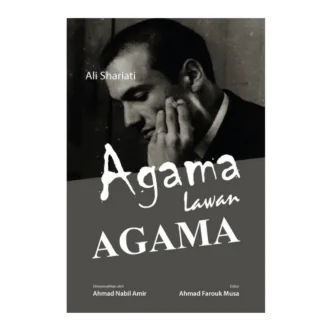Bajautopia: Tales of Borneo’s Sea Nomads aims to reflect on both the struggles and hopes of the Bajau Laut community. The book title Bajautopia comes from a combination of two words — ‘Bajau’ and ‘Utopia’. This edited volume does not pretend to be a comprehensive collection of writings about the world of the Bajau Laut. As a collection of essays and architecture research, its aim is to stimulate provocative ideas and debates for the betterment of the Bajau Laut. Bajautopia is both a manifesto and a provocation. This book should not be seen as an exercise in design per se, but an invitation for planners, politicians, scientists, engineers, environmentalists and activists to further a holistic dialogue and to stimulate ideas for a sustainable future for the Bajau Laut. In this way, the authors engage with the discourse of utopianism and use the Bajau Laut as a critical lens through which to observe misconceptions of their nomadic lifestyle as it is conventionally understood. Underlying this book is indeed a constructive criticism of existing attempts to build an inclusive Malaysian society through categories of race, culture and geography.
This edited volume contains a collection of inspiring essays to reveal the life and culture of Bajau Laut. The book brings together a wide range of essay contributors, led by the foremost writers and scholars from the fields of architecture, history, film studies, anthropology, tourism, political science, and urban planning in Malaysia. Considered as a dialogue between scholars/writers from different cultural backgrounds and epistemological contexts, this book explores a diverse range of topics integral to the livelihood of the Bajau Laut. These tales of sea nomads are further explored and illustrated by an extensive number of architectural ideas and imaginaries which aim to stimulate ideas for the environmental and social-spatial transformation of this maritime community. This collection of work consists of hybrid materials: poems, comics, photographs, maps, site drawings, imaginative sketches, models, artworks, and other visual materials. With such a rich collection of multifaceted contents, the authors hope not merely to capture multiple narratives and representations, but most importantly to provoke critical thinking on alternative forms of democracy and the well-being of the Bajau Laut.
The Bajau Laut were one of the major maritime communities of ancient Southeast Asia. Their habitats and maritime mobilities can be traced across the Sulu Sea, Borneo Island, the Celebes Sea, the seas off northern Australia and New Zealand. Due to geographical and linguistic disparities, they are diversely known as: Suku Badjoo, Bajus, Bajo, Badjao, Badjau, Bajao, Bajaw, Bajak Laut, Sama Dilaut, Gipsi Laut (sea gipsies/sea nomads). Born stateless, this group of ancient sea-nomads are a classic example of a marginalised people, where issues of inequality and humanitarian justice remain unresolved.
The status of stateless Bajau Laut was defined primarily by their boat-dwelling way of life and by their lack of independent claim. Today, the undocumented Bajau Laut have no rights to healthcare, education and social welfare and are left in political limbo, rejected by the governments of Malaysia, Indonesia and the Philippines. The formation of national borders has become a major threat to their nomadic lifestyles because the sea nomads’ maritime movements and fishing activities are now considered illegal.
According to the Sabah State Population Census 2013, an estimated 494,700 Bajau Laut were living in the state. The Sabah government, however, did not grant them legal nationality. Likewise, whilst many inspiring concepts such as ‘1 Malaysia’ and ‘Keluarga Malaysia’ (Malaysian Family), have been proudly proclaimed by the Malaysian Government, these concepts do not seem to prevent the ongoing exclusion of the Bajau Laut, despite their presence in the Sulu Archipelago dating back centuries. Misunderstanding, prejudice and discrimination are perhaps the best words to describe the long-standing traumas faced by the Bajau Laut. ‘Sea gypsies’ or ‘sea nomads’ were terms that generally connoted a low level of civilization due to their economic-cultural isolation and marginalisation from mainstream society.
As Carol Warren suggests, however, such descriptions have not necessarily bothered the sea gypsies, judging from the pride they take in their identity and the preservation of their great traditions. Indeed, the Bajau Laut have a great mastery of the seas. They take the ocean as their home. Their livelihoods depend on marine resources with superb fishing techniques (a hook-and-line method) and unparalleled free-diving skills due to their bigger spleens evolved through genetic adaptation over time. Yet how can we change the misperception of the Bajau Laut by mainstream society?
To take insights from Barbara Watson Andaya, one important way is to imagine a future for the Bajau Laut which returns them to their connection with the water and empowers their identity and nomadic way of life. In this research and book project, the authors ask: What defines spaces of sustainability, equity, democracy and well-being for the Bajau Laut? How could contemporary architecture offer imagine forms of settlement to the Bajau Laut, while bringing new opportunities and potential benefits to our marine environment and the construction of an inclusive society?
With these key inquiries, the authors hope to search for new viewpoints and ideas to correct our misperceptions towards the Bajau Laut.











Reviews
There are no reviews yet